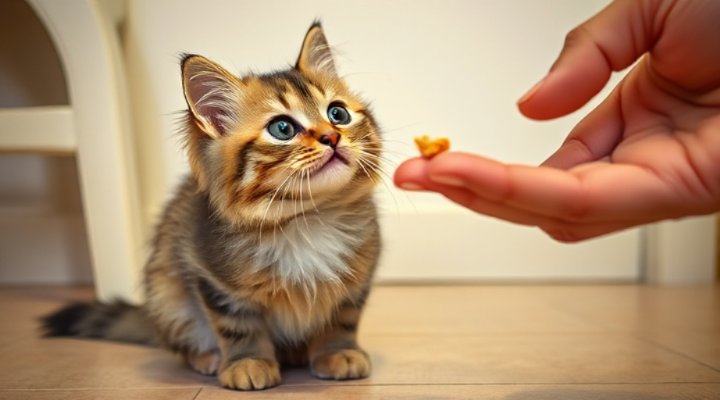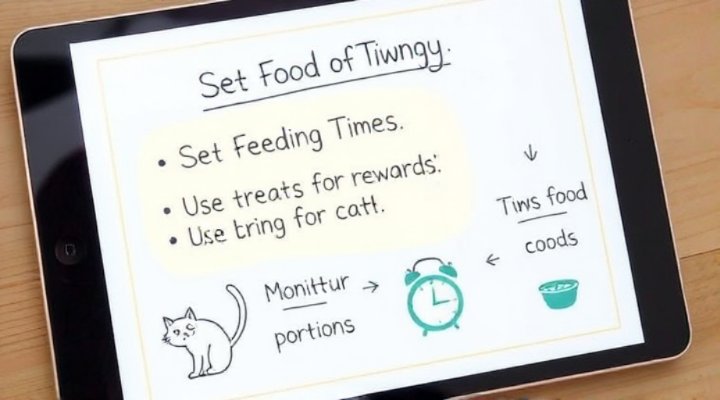In this article, we delve into the world of cat food training, a fantastic approach that combines diet and behavior to create a happier, healthier cat. That is to say, by making smart food choices, you can teach your feline friend good habits while boosting their well-being. For example, using treats as rewards during training sessions can work wonders. Above all, remember that patience and consistency are key. So, let’s get started on this rewarding journey!

Understanding Cat Food Training and Its Benefits
Cat food training is all about using your cat’s diet to encourage positive behaviors. In other words, it’s not just about filling their bowl; it’s about timing, quality, and reinforcement. Consequently, this method can lead to better obedience, such as coming when called or using the litter box reliably. Moreover, it promotes overall health by ensuring a balanced diet. For instance, I once had a finicky eater who started responding well to scheduled feedings—it made a huge difference in his energy levels. Similarly, many cat owners report reduced behavioral issues after implementing these techniques. Therefore, embracing cat food training can transform your relationship with your pet.
How Reward-Based Feeding Works in Feline Diet Training
Reward-based feeding is a core part of cat food training. That is to say, you use food as a positive reinforcement for desired actions. For example, when your cat sits on command, give them a small, healthy treat. This not only rewards the behavior but also strengthens the bond between you. However, it’s crucial to choose high-quality treats to avoid overfeeding. In addition, timing is everything—offer the reward immediately after the good behavior to make the connection clear. As a result, your cat learns to associate obedience with pleasant outcomes. To clarify, this isn’t about bribing; it’s about building trust and motivation.

Key Techniques for Effective Cat Food Training
To succeed in cat food training, focus on a few essential techniques. Firstly, establish a consistent feeding schedule. This helps regulate your cat’s metabolism and sets expectations. Secondly, use portion control to maintain a healthy weight—overfeeding can lead to obesity, which harms health. Further, incorporate interactive feeders or puzzles to make mealtime engaging. For instance, I tried a puzzle feeder with my cat, and it kept her mentally stimulated while slowing down her eating. Meanwhile, always pair food rewards with verbal praise to reinforce the behavior. In the same vein, avoid using food as punishment, as this can create negative associations. So, by combining these methods, you’ll see steady progress in your cat’s training.
The Role of Nutritional Balance in Feline Health
Nutritional balance is vital in cat food training. In other words, the food you choose should meet all your cat’s dietary needs. For example, a diet rich in protein supports muscle health, while vitamins and minerals boost immunity. Consequently, a well-fed cat is more responsive to training and less prone to health issues. Moreover, consider your cat’s age, activity level, and any specific conditions. If you’re unsure, consult resources like our guide on Best Cat Food for Indoor Cats for tailored advice. Additionally, the FDA’s pet food guidelines offer reliable information on safety and standards. Therefore, prioritizing nutrition ensures that training efforts pay off in long-term health.

Common Challenges in Cat Food Training and How to Overcome Them
While cat food training is rewarding, it can come with challenges. For instance, some cats are picky eaters, making it hard to use food as a motivator. But on the other hand, this can be addressed by experimenting with different textures and flavors. Another issue is over-reliance on treats, which might lead to weight gain. To clarify, limit treats to 10% of daily calories and opt for low-calorie options. Meanwhile, if your cat isn’t responding, reassess your timing or the value of the reward. I faced this with my older cat and found that switching to wet food made training more effective. Similarly, patience is key—don’t get discouraged if progress is slow. In conclusion, with persistence and adaptation, you can overcome these hurdles.
Integrating Cat Food Training with Other Behavior Methods
Cat food training works best when combined with other behavior techniques. For example, pair it with clicker training for precise reinforcement. Moreover, use environmental enrichment, like toys and scratching posts, to reduce boredom-related issues. Further, our article on Effective Behavior Training Using Temptations Cat Treats provides great tips for synergy. Likewise, ensure your cat gets regular exercise to complement dietary efforts. As a result, this holistic approach leads to a well-rounded, happy pet. So, don’t hesitate to mix and match methods for the best outcomes.

Long-Term Benefits of Cat Food Training for Feline Obedience
The long-term benefits of cat food training are immense. Firstly, it fosters a strong human-animal bond through positive interactions. Secondly, it can prevent common problems like aggression or anxiety by providing structure. Consequently, your cat becomes more confident and easier to manage. For instance, a trained cat is less likely to develop destructive habits. Moreover, improved health from balanced nutrition means fewer vet visits and a longer lifespan. In the same vein, this training empowers you as an owner, making daily life smoother. Therefore, investing time in cat food training pays dividends for years to come.
Tips for Maintaining Consistency in Your Training Routine
Consistency is crucial in cat food training. That is to say, stick to the same commands, rewards, and schedules to avoid confusion. For example, feed at the same times each day and use consistent verbal cues. Additionally, keep a training journal to track progress and adjustments. Meanwhile, involve all family members to ensure everyone is on the same page. I found that setting reminders on my phone helped me stay consistent with my cat’s routine. So, by making training a regular part of your day, you’ll see better and faster results.

Expert Insights on Cat Food Training and Feline Nutrition
Experts emphasize the importance of a tailored approach in cat food training. According to veterinarians, understanding your cat’s individual needs is key. For instance, kittens require different nutrients than seniors. Moreover, resources like the AVMA’s cat care guidelines offer evidence-based advice. Further, our site’s Seven Health Benefits of Wet Cat Food highlights how diet impacts training success. Consequently, seeking professional input can enhance your efforts. So, don’t hesitate to consult a vet for personalized recommendations.
In summary, cat food training is a powerful tool for enhancing your cat’s obedience and health. By focusing on reward-based feeding and nutritional balance, you can create a positive, lasting impact. Remember, every cat is unique, so be patient and adaptable. With these strategies, you’ll build a stronger bond and a happier, healthier feline friend.
Related Keywords: cat food training, feline diet training, reward-based feeding, nutritional balance for cats, cat obedience training, positive reinforcement, feline health, cat behavior, diet choices for cats, pet training techniques.

